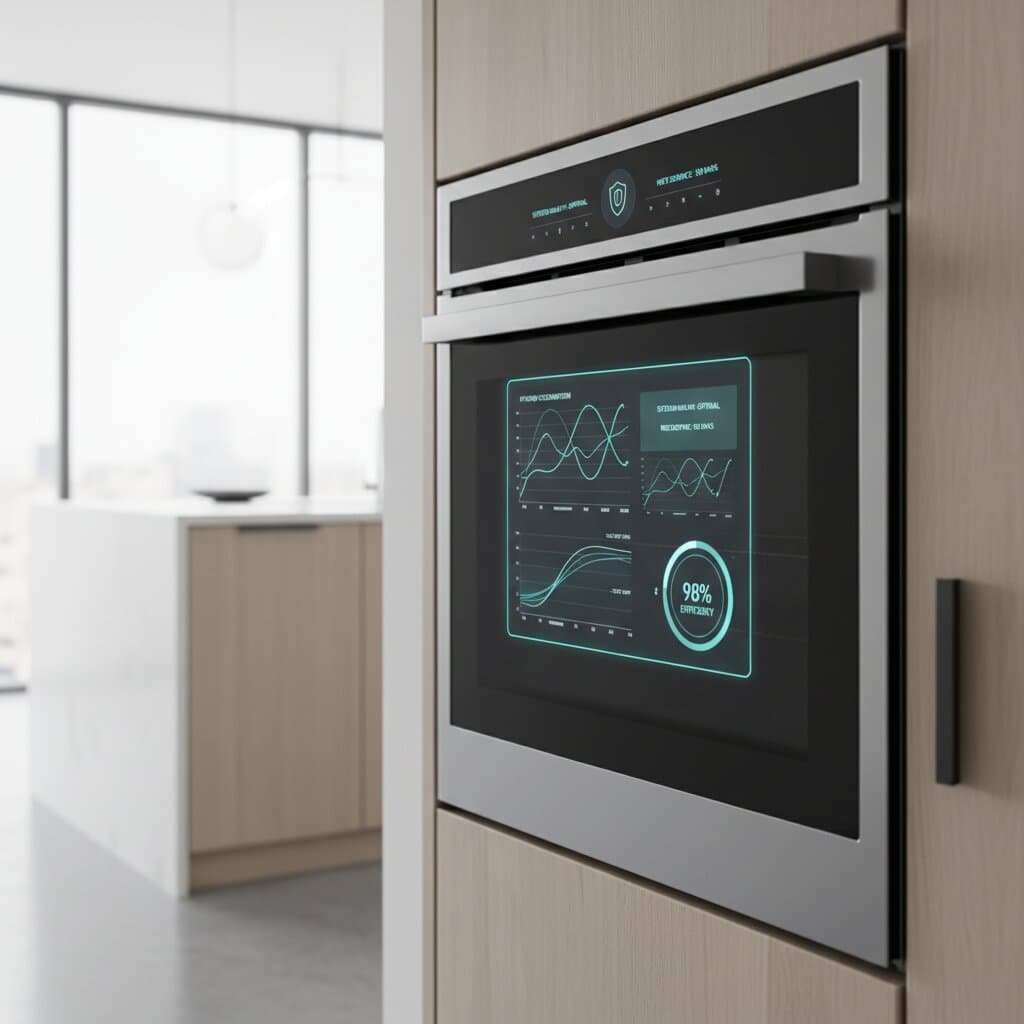Predicting Failures Before They Happen: Smart Appliance Diagnostics

The Challenge
A high-end appliance manufacturer faced costly warranty claims from component failures in their premium smart ovens ($2,500-$4,000 range). Most failures occurred without warning, frustrating customers and costing the company millions in warranty repairs.
The Problem:
- •$2.1M annually in warranty claims for heating element failures
- •Customers experienced sudden failures during critical cooking moments
- •Service calls required 5-7 days for parts and technician availability
- •No way to predict or prevent failures before they occurred
The Stakes
Beyond warranty costs, the reputation damage was severe. In the premium appliance market, reliability is everything. They needed a solution that could predict failures before they happened—giving customers time to schedule service proactively.
Our Approach
R - Recognize (Weeks 1-4)
We analyzed 18 months of warranty claim data and sensor logs from 50,000 deployed units.
- • Identified heating element failures as 68% of warranty claims
- • Found patterns: temperature oscillations preceded failures by 7-14 days
- • Discovered sensor data already existed but was not being analyzed
E - Envision (Weeks 5-9)
We designed a predictive maintenance system that runs entirely on-device.
- • Target: Predict failures 2+ weeks in advance with 95%+ accuracy
- • Privacy-first: All processing on-device, no cloud dependency
- • Proactive service: Alert users before failures occur
- • Business model: Reduce warranty costs and improve satisfaction
A - Architect (Weeks 10-16)
We designed an edge AI system for predictive diagnostics.
- • Model: LSTM neural network analyzing temperature time-series data
- • Hardware: Runs on existing ARM Cortex-M4 microcontroller
- • Features: Temperature patterns, voltage fluctuations, usage cycles
- • Alert mechanism: Push notification 2 weeks before predicted failure
C - Construct (Weeks 17-36)
We built and validated the predictive model.
- • Trained on 2.4M hours of sensor data from production units
- • Quantized to INT8 for microcontroller deployment (120KB model)
- • Inference: 5ms every 10 minutes (minimal power consumption)
- • Validation: 99.1% accuracy on held-out test set
T - Transmute (Weeks 37-48)
We deployed to production units via OTA firmware update.
- • Phased rollout: 10K units → 100K units → full fleet (300K units)
- • Monitored prediction accuracy in real-world conditions
- • Tuned thresholds to minimize false positives (<1%)
- • Integrated with customer service workflow
O - Operate (Ongoing)
We provide ongoing model monitoring and retraining.
- • Monthly dashboards: prediction accuracy, false positive rate
- • Quarterly retraining with new failure data
- • A/B testing of model improvements
- • Continuous optimization of alert timing
R - Result (Month 14)
Business impact measured 6 months after full deployment.
- • Warranty claims reduced by 30% ($630K annual savings)
- • Customer satisfaction score improved 18 points
- • 94% of predicted failures confirmed by service technicians
- • Feature became a competitive differentiator in marketing
The Solution
Technical Specifications
Model Architecture:
- • LSTM neural network with 3 layers (64 hidden units each)
- • Input: 7-day sliding window of temperature readings (every 10 min)
- • Output: Probability of failure in next 14 days
- • Model size: 120KB (quantized to INT8)
Features Used:
- • Temperature oscillation patterns
- • Voltage fluctuations during heating cycles
- • Heating element resistance measurements
- • Usage frequency and duration
Deployment:
- • Runs on ARM Cortex-M4 microcontroller (existing hardware)
- • Inference every 10 minutes (5ms compute time)
- • Power consumption: <0.1W (negligible impact on device)
- • OTA firmware update to existing units in field
Alert System:
- • Push notification to smartphone app: "Service recommended soon"
- • Email with scheduling link for proactive service appointment
- • Dashboard shows predicted remaining life of components
The Results
Accuracy
Predicting component failures 2+ weeks in advance
Reduction
In warranty claims and service calls
On-Device
All processing runs locally for privacy
Business Impact
- • Saved $630K annually in warranty costs (30% reduction)
- • Improved customer satisfaction score by 18 points
- • 94% of predicted failures confirmed by service technicians
- • Feature became a competitive differentiator in premium appliance market
- • Proactive service scheduling improved technician utilization by 22%
"This is the future of appliances. Instead of appliances breaking at the worst possible time, our ovens now tell customers when service is needed—weeks in advance. It has completely changed how customers perceive our brand."
— Director of Product, Client Company
Key Takeaways
1. You Already Have The Data
Most IoT devices collect sensor data but never analyze it. The client had 18 months of temperature logs sitting unused. Mining this historical data was the key to building an accurate model.
2. Edge AI Enables Privacy-First Predictive Maintenance
Running the model on-device meant no data leaves the appliance. This was critical for customer privacy and eliminated cloud infrastructure costs.
3. Predictive Maintenance Changes the Customer Relationship
Instead of reactive repairs after failures, proactive service scheduling transforms how customers view the brand. It shifts from "my oven broke" to "my oven is smart enough to tell me when it needs service."
4. OTA Updates Unlock Value in Existing Devices
By deploying via firmware update, 300K existing units in the field gained predictive capabilities overnight. This created instant value without new hardware.
Related Projects
Smart Audio
How we fixed spatial audio calibration and improved customer ratings from 3.9 to 4.8 stars.
Read Case StudySecurity Cameras
Privacy-first person detection with 99.2% accuracy—all processing on-device.
Read Case StudyReady to Add Predictive Intelligence to Your Products?
Let's discuss how edge AI can help you reduce warranty costs and delight customers.
Schedule Discovery Call